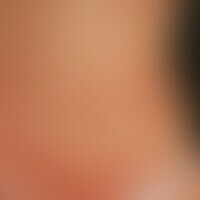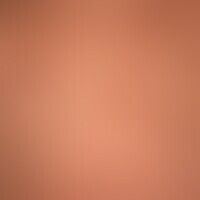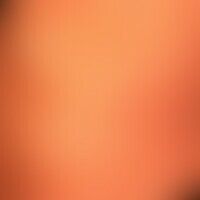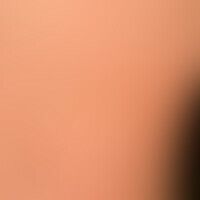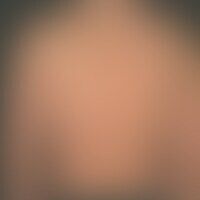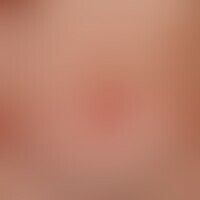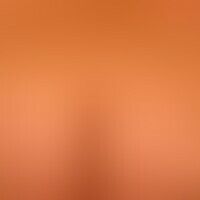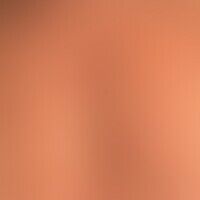Image diagnoses for "Torso", "Nodules (<1cm)", "red"
109 results with 274 images
Results forTorsoNodules (<1cm)red

Schnitzler syndrome L53.86
Schnitzler syndrome: considerable feeling of illness with recurrent fever attacks, itchy urticarial (here rather discreetly developed) exanthema (exanthema attacks go parallel with the periodic fever); furthermore exhaustion and tiredness.
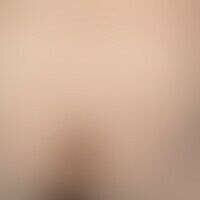
Scabies nodosa B86.x
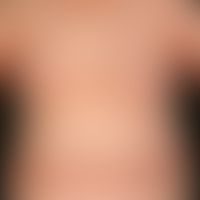
Lichen planus exanthematicus L43.81
Lichen planus exanthematicus. symmetricgeneralized distribution pattern of Lichen planus. the densification of the efflorescences in the belt region is to be interpreted as (pressure-induced) Koebner phenomenon.
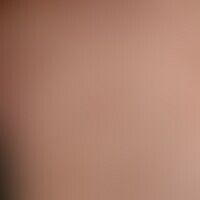
Scabies nodosa B86.x
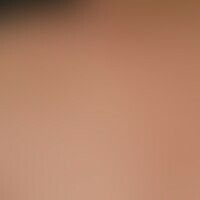
Malasseziafolliculitis B36.8
Malasseziafolliculitis: Disseminated follicle-associated inflammatory papules and papulopustules on the back of a 53-year-old female patient with melanocytic naevi and isolated seborrheic keratoses.
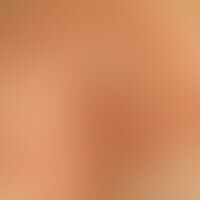
Granuloma anulare disseminatum L92.0
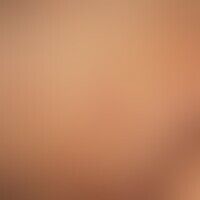
Skabies B86
Scabies. line and hook-shaped, reddened, infiltrated ducts on the field skin, considerable itching.
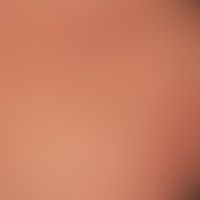
Dermatitis herpetiformis L13.0
Dermatitis herpetiformis: Multiple, prickly, itchy, scratched excoriations in a 35-year-old female patient; the disease has existed for about 1 year with intermittent course.
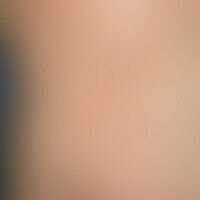
Cat scratch disease A28.10
Cat scratch disease. Dense exanthema of reddened papules around the trunk.
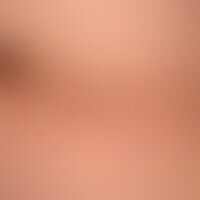
Lichen planus exanthematicus L43.81
Lichen planus exanthematicus: an itchy exanthema that has existed for several months, with 0.1-0.2 cm large, slightly raised, disseminated, smooth, shiny, yellow-reddish, shiny papules.
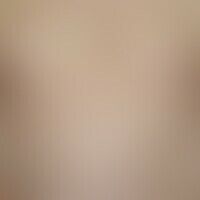
Cherry angioma D18.01
Angioma, senile, multiple, bright red, persistent, hardly increasing in size, disseminated standing papules; the angiomas have been present in the patient for more than 10 years.
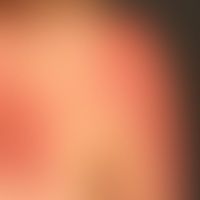
Contact dermatitis allergic L23.0
Pronounced. large-area allergic contact eczema: large, blurred (scattered edges), itchy, red, rough, scaly plaques that have existedfor 4 weeks.
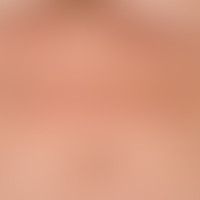
Dyskeratosis follicularis Q82.8
dyskeratosis follicularis. presentation of multiple, chronically stationary, disseminated, red nbis rfot-brown papules localized in the submammary and upper abdomen. in these areas strong increase of skin changes, especially in summer with increased sweating.
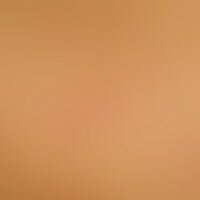
Keratosis lichenoides chronica L85.8
Keratosis lichenoides chronica: Generalized exanthema of scaly, lichenoid papules in a linear arrangement.
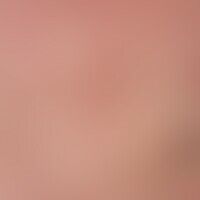
Granuloma anulare disseminatum L92.0
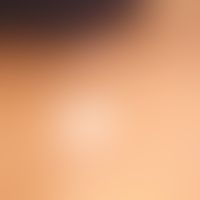
Nevus melanocytic (overview) D22.-
Common melanocytic nevus. type: Halo-nevus, almost complete regression of the melanocytic nevi, which are indicated as light brown spots in the middle of the pigment-less areas.
